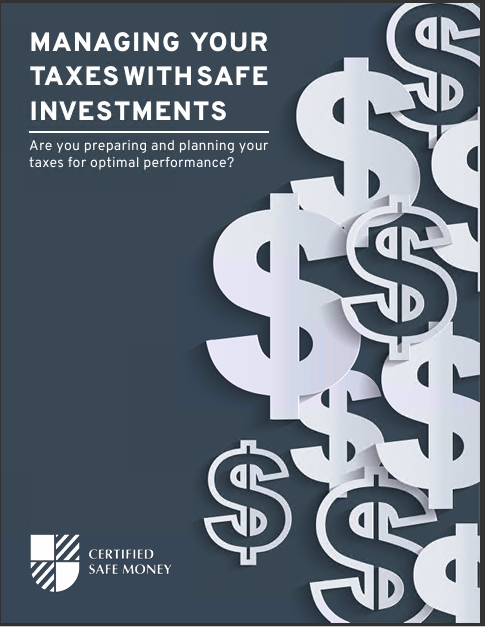Key Takeaways
-
Understanding annuity taxation can significantly impact how much money you retain during retirement.
-
Timing your withdrawals carefully and knowing the tax implications can maximize your annuity’s benefits.
Annuities and Taxes: Why They Matter in Retirement
If you’re considering annuities for retirement, you’re likely looking for ways to secure a reliable income. Annuities offer guaranteed payments, but it’s crucial to understand how taxes affect them. Taxes can significantly impact how much money actually ends up in your pocket each month. Knowing the tax landscape ensures you’re not caught off guard when it’s time to enjoy your hard-earned savings.
Let’s dive into five important tax considerations you should clearly know when dealing with annuities in retirement.
1. Understanding How Annuities Are Taxed
Annuities aren’t taxed like typical investment accounts. Instead, the IRS classifies annuity income in specific ways, affecting your tax liability.
Immediate vs. Deferred Annuities
-
Immediate Annuities: If you purchase an immediate annuity, part of each payment is considered a return of your initial investment (principal), which isn’t taxed. The remaining part, representing earnings, is taxable as ordinary income.
-
Deferred Annuities: Taxes on earnings are deferred until you begin withdrawing. Earnings accumulate tax-free initially, allowing your money to grow more quickly than if taxed annually.
General Cost Considerations
Typically, your principal contribution isn’t taxed when returned, but the earnings portion is subject to ordinary income tax rates, which can range from 10% to 37%, depending on your tax bracket.
2. Be Aware of the “Exclusion Ratio”
The IRS uses an “exclusion ratio” to calculate how much of your annuity payment is taxable versus how much is a tax-free return of your principal. Understanding this ratio is vital for accurate tax planning.
How the Exclusion Ratio Works
The exclusion ratio depends on your life expectancy and the amount of money invested. Each payment you receive from an immediate annuity is divided into two parts:
-
Tax-Free Portion: Based on your original investment.
-
Taxable Portion: Based on the earnings or interest accumulated.
This ratio remains fixed throughout your retirement, providing predictability in your taxes.
3. Withdrawal Timing and Its Tax Implications
Timing is crucial when withdrawing from annuities, especially deferred annuities. Withdrawals can have significant tax consequences based on when and how much you withdraw.
Withdrawals Before Age 59½
If you withdraw money before age 59½, you typically face a 10% early withdrawal penalty on the taxable portion, in addition to regular income taxes. This penalty can substantially reduce your retirement funds.
Withdrawals After Age 59½
After age 59½, you avoid the early withdrawal penalty, but taxes still apply to earnings at ordinary income rates. Strategic withdrawal timing can help manage tax brackets and reduce the total tax burden over your retirement years.
Mandatory Withdrawals
Some annuities require mandatory withdrawals at a certain age (usually around 72, similar to IRA required minimum distributions). Ignoring these requirements can result in steep tax penalties, up to 50% of the amount you should have withdrawn.
4. Estate Planning and Annuity Taxation
Estate planning involving annuities can get complicated, especially regarding inheritance. It’s important to know how annuities are taxed when they pass to beneficiaries.
Taxation for Beneficiaries
Beneficiaries inheriting an annuity will owe taxes on any accumulated earnings. Unlike some other inheritances, these earnings don’t receive a “step-up” in basis to reduce taxation. Instead, beneficiaries typically pay ordinary income taxes on gains upon distribution.
Stretch Options
Some annuities offer “stretch” provisions allowing beneficiaries to take distributions over their lifetime, spreading out the tax liability. Understanding these options can provide significant tax advantages for your heirs.
5. Tax Advantages of Qualified vs. Non-Qualified Annuities
Annuities fall into two broad categories: qualified and non-qualified. Each has distinct tax treatments that could influence your retirement strategy.
Qualified Annuities
-
Funded with pre-tax dollars (often from retirement accounts like IRAs or 401(k)s).
-
Entire withdrawal amount is taxable as ordinary income.
-
Subject to required minimum distributions starting at age 72.
Non-Qualified Annuities
-
Funded with after-tax dollars.
-
Only the earnings portion is taxable upon withdrawal.
-
No required minimum distributions, providing greater flexibility in retirement.
Understanding these distinctions can significantly impact your tax planning and retirement income strategy.
Strategies to Minimize Annuity Tax Impact
You can adopt several strategies to minimize taxes associated with annuities, ensuring more money stays with you during retirement.
Laddering Annuities
Purchasing multiple annuities that mature at different times can spread out tax liabilities. This method helps manage your income and maintain lower tax brackets, reducing your overall tax bill.
Partial Withdrawals
Taking systematic partial withdrawals rather than lump-sum distributions can keep your annual taxable income lower, potentially avoiding higher tax brackets.
Combining Annuities with Other Investments
Diversifying your portfolio by combining annuities with tax-efficient investments like Roth IRAs or municipal bonds can reduce the overall tax impact in retirement.
Maximizing Your Annuity Benefits Through Smart Tax Planning
Effectively managing annuity taxes requires careful planning and awareness of IRS rules. By strategically timing withdrawals, understanding the exclusion ratio, and knowing estate implications, you can significantly enhance your retirement income.
Staying informed about the tax landscape for annuities will help you maximize your retirement dollars, leaving you with greater financial flexibility and peace of mind.
Your Next Step: Making Annuity Taxation Work for You
Now that you’re clear about these tax considerations, take action by reviewing your annuity plans and consulting a financial professional. With thoughtful planning, annuities can remain a valuable, tax-efficient part of your retirement strategy.











